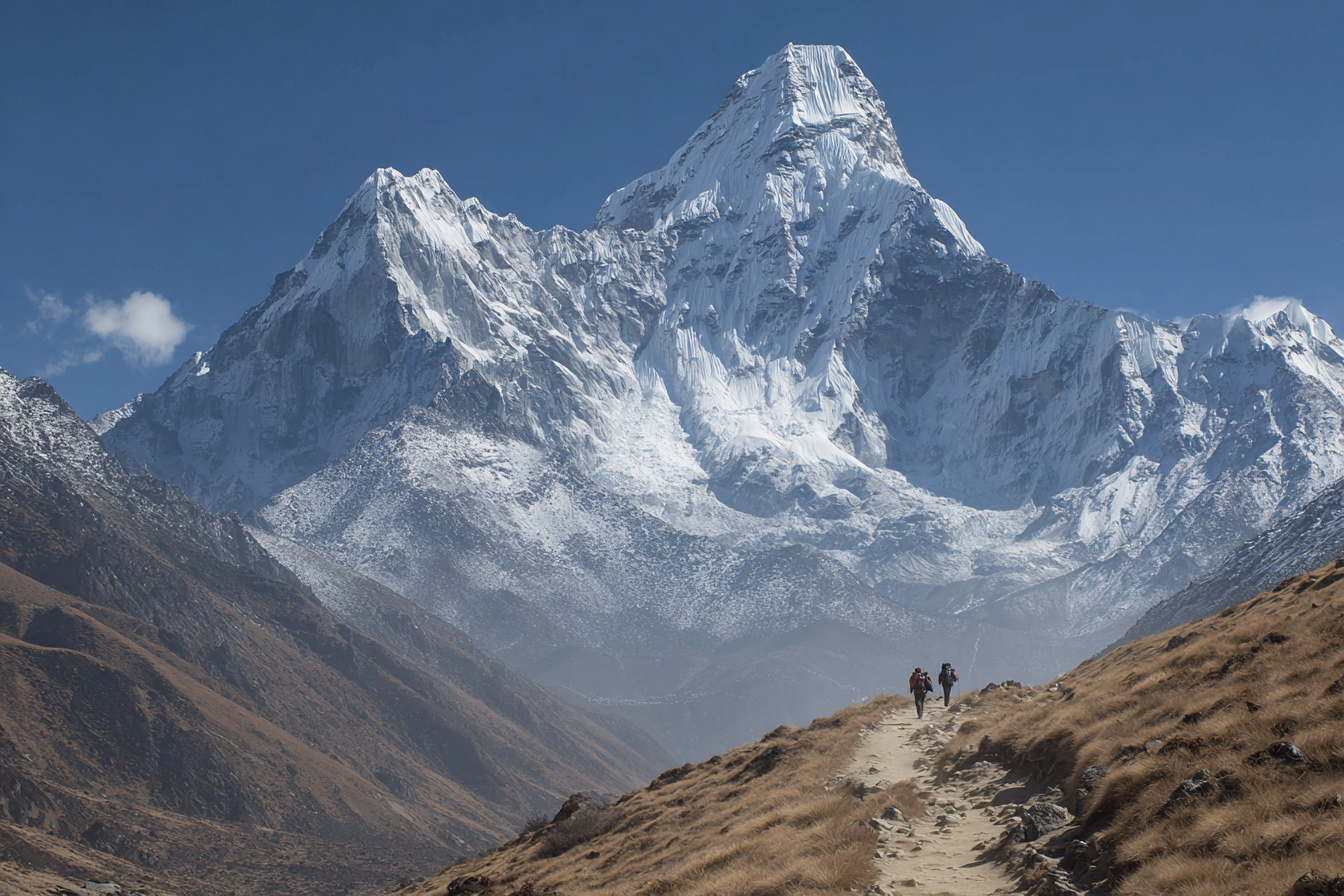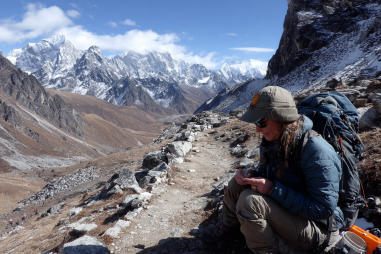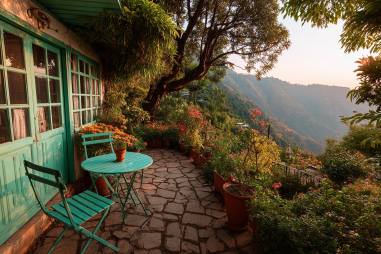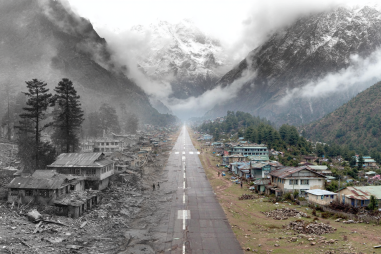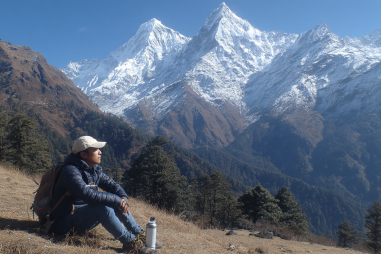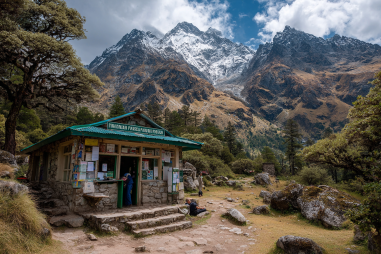Embarking on the Everest Base Camp trek is a thrilling adventure that draws thousands of trekkers from all corners of the globe each year. Standing at the foot of the world’s tallest mountain, the trek offers breathtaking landscapes, rich cultural encounters, and a profound sense of accomplishment. Whether you’re a seasoned trekker or a first-time adventurer, understanding the intricacies of the journey can help make your expedition safe, enjoyable, and unforgettable. This guide will walk you through everything from choosing the best time to trek, to preparing your gear, managing altitude sickness, and beyond.
When to Go: Best Seasons and Weather Considerations
The timing of your Everest Base Camp trek plays a crucial role in your experience. The two primary trekking seasons are spring (March to May) and autumn (late September to November). Both these seasons offer stable weather, clear skies, and moderate temperatures, making them the most popular times to undertake the trek.
Spring offers the added beauty of rhododendron forests in full bloom, while autumn boasts stunning post-monsoon visibility with clear mountain views. Though winter treks (December to February) are possible, they are much colder, and some trails or teahouses may be closed. Summer (June to August) correlates with the monsoon season, bringing heavy rain, slippery trails, and leeches, so it’s generally not recommended except for those seeking solitude and lush green valleys.
Detailed 14-Day Itinerary Overview
A typical 14-day itinerary balances trekking with rest and acclimatization days, helping maximize safety and enjoyment:
- Day 1: Arrival in Kathmandu – final preparations and permit acquisition.
- Day 2: Flight to Lukla (2,860m) and trek to Phakding (2,610m) – a gentle start through charming villages.
- Day 3: Phakding to Namche Bazaar (3,440m) – steep ascent and vibrant Sherpa marketplace.
- Day 4: Acclimatization day in Namche Bazaar – optional hikes and exploration.
- Day 5: Namche Bazaar to Tengboche (3,860m) – visit the famous Tengboche Monastery.
- Day 6: Tengboche to Dingboche (4,360m) – entering alpine terrain.
- Day 7: Acclimatization day in Dingboche – rest or short hikes to aid adaptation.
- Day 8: Dingboche to Lobuche (4,940m) – closer to high altitude zones.
- Day 9: Lobuche to Gorak Shep (5,170m) and onward to Everest Base Camp (5,364m) – the highlight of the trek.
- Day 10: Early morning hike to Kala Patthar (5,550m) for sunrise mountain views and descend to Pheriche (4,240m).
- Day 11: Pheriche to Namche Bazaar – descending to lower altitudes.
- Day 12: Namche Bazaar to Lukla.
- Day 13: Flight back to Kathmandu.
- Day 14: Leisure day in Kathmandu or onward travel.
This itinerary provides adequate time for acclimatization which is essential for preventing altitude sickness and ensuring a comfortable trek.
Essential Trekking Gear and Equipment
Proper gear is key to staying comfortable and safe on the Everest Base Camp trek. Here’s a checklist to guide your packing:
- Clothing: Layering is crucial; bring moisture-wicking base layers, a warm insulated jacket, waterproof outer shell, trekking pants, gloves, hats, and thermal underwear.
- Footwear: Quality waterproof trekking boots and woolen socks reduce blisters and allow long days on rough paths.
- Backpack: A sturdy, comfortable backpack (30-40 liters) for daily essentials plus a duffel bag for the porter or airport transfers.
- Sleeping Gear: A warm sleeping bag rated to -10°C or lower, as nights can be cold in high altitudes.
- Accessories: Sunglasses with UV protection, sunblock, trekking poles, water bottles or hydration systems, headlamp, and a basic first-aid kit.
- Miscellaneous: Camera, extra batteries, snacks, toilet paper, and personal hygiene products.
Acclimatization Tips and Altitude Sickness Prevention
Altitude sickness is a common challenge at the higher elevations of the trek. Symptoms include headache, nausea, dizziness, and fatigue. To minimize risks, follow these key acclimatization tips:
- Ascend slowly: Incorporate rest days and limit daily altitude gains to no more than 300-500 meters.
- Stay hydrated: Drink plenty of water to aid acclimatization and reduce headaches.
- Listen to your body: If symptoms worsen, descend immediately and seek medical attention if necessary.
- Consider medications: Diamox (acetazolamide) can be used to help acclimatize, but always consult a healthcare professional before use.
- Avoid alcohol and smoking as they can exacerbate symptoms.
Rest days, especially in Namche Bazaar and Dingboche, offer excellent opportunities for gradual acclimatization.
Recommended Fitness Level and Training
The Everest Base Camp trek demands a moderate to high level of physical fitness due to the strenuous daily hikes and altitude. Preparation should ideally start 2-3 months ahead of your trek and include:
- Cardiovascular Training: Running, cycling, swimming, or hiking to improve endurance.
- Strength Training: Focus on legs, core, and back to handle long walks with a backpack.
- Practice Hikes: If possible, undertake day hikes with weighted backpacks to mimic trekking conditions.
- Flexibility and Balance: Incorporate yoga or stretching exercises to lower injury risk.
A good fitness base not only makes the trek easier but also enhances your enjoyment and safety.
Permits and Regulations
To trek to Everest Base Camp, you need two key permits:
- TIMS Card (Trekkers’ Information Management System): Helps track trekkers in the region and ensures safety.
- Sagarmatha National Park Entry Permit: Required as the trek passes through this protected area.
Both permits are usually obtained in Kathmandu before the trek begins. Guide agencies or trekking companies often assist with the paperwork. It’s important to carry these permits at all times as park rangers conduct regular checks.
Safety Considerations and Emergency Contacts
Safety is paramount on the Everest Base Camp trek, given the remote location and potential altitude issues. Here are important safety pointers:
- Always trek with a reputable guide or as part of an organized group, especially if this is your first high-altitude trek.
- Carry a fully charged mobile phone with local SIM or a satellite phone for areas without coverage.
- Learn about the symptoms of altitude sickness and be ready to descend if they occur.
- Keep emergency contact numbers handy, including local rescue services and your embassy.
- Insurance that covers high-altitude trekking and helicopter evacuation is strongly recommended.
Many teahouses along the trail provide basic medical help, but for serious conditions, evacuation to Kathmandu may be necessary.
Getting Ready for the Adventure Ahead
Preparing for the Everest Base Camp trek involves more than physical training and packing; it’s also a mental journey. Research the culture, the people, and the environment you’ll experience. Talk to past trekkers to understand their challenges and joys. By planning your itinerary carefully, packing the right gear, staying fit, and respecting the mountain environment, you maximize your chances of having an extraordinary trek filled with memories that last a lifetime.
Whether it’s your first time trekking in the Himalayas or your hundredth, the Everest Base Camp trek promises awe-inspiring views and personal growth. Start your preparations today, and the roof of the world will be waiting for you with open arms.

